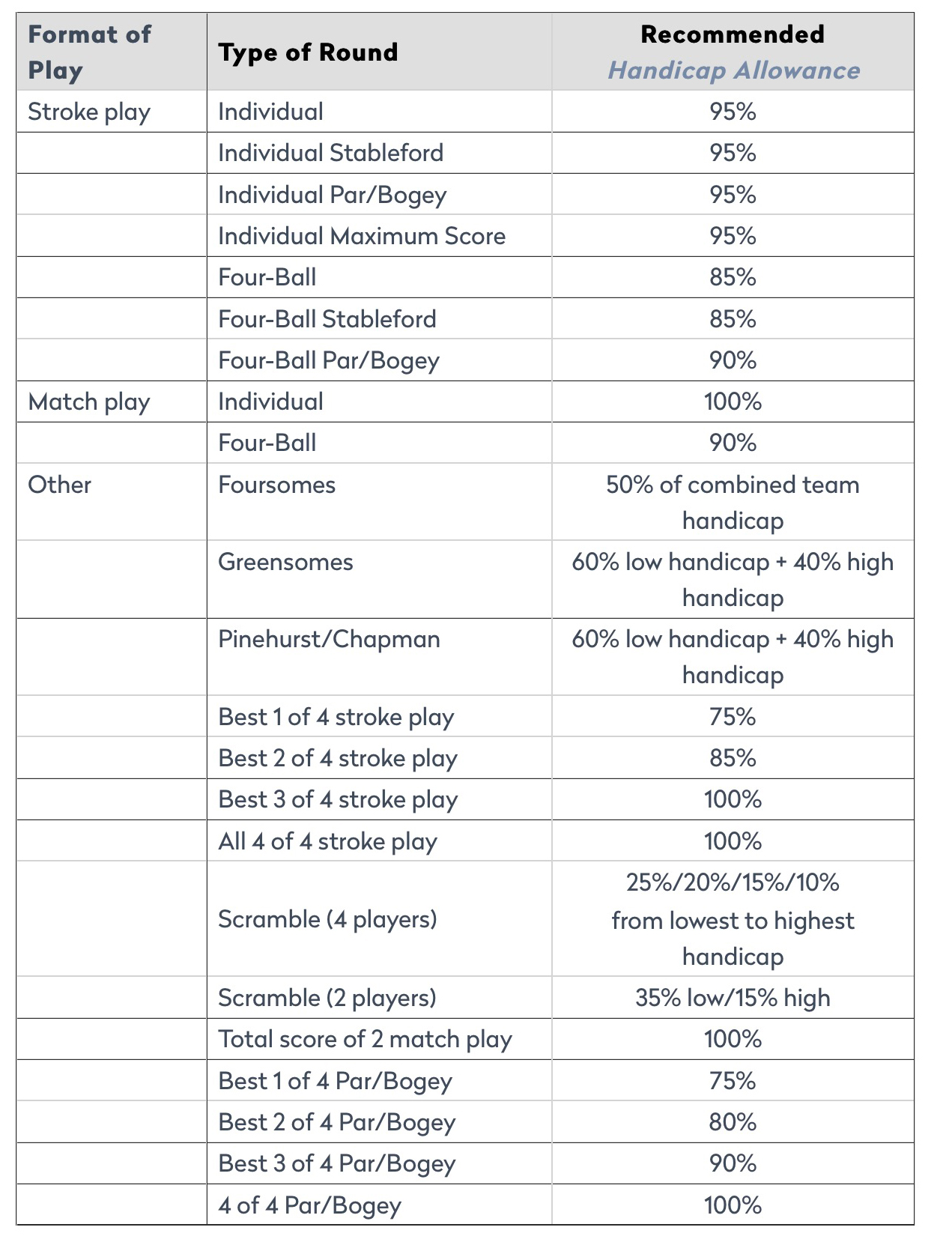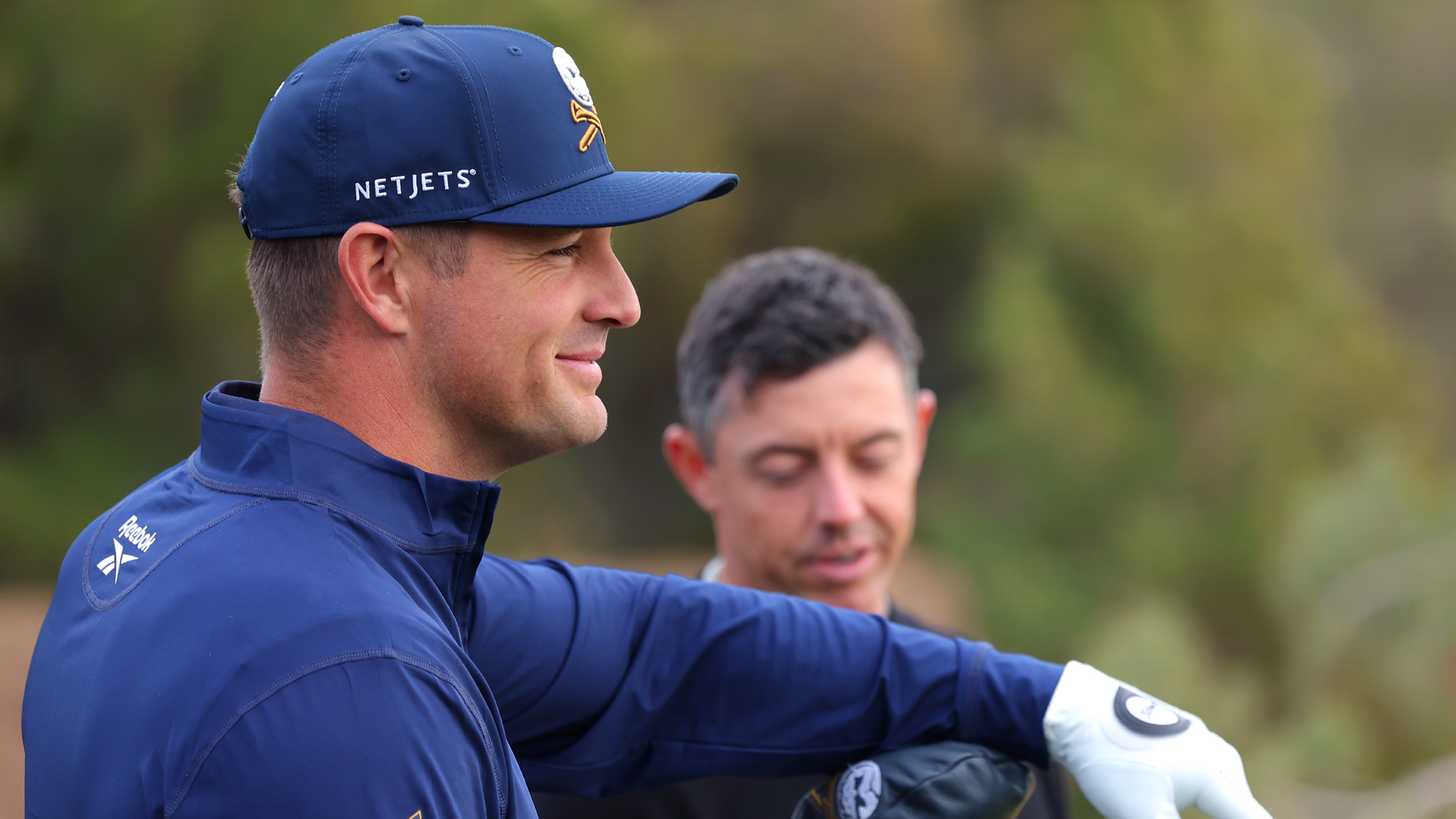Handicap Allowances Under WHS
How many shots will you be giving or receiving in different formats of play? We consider handicap allowances under the World Handicap System.


The World Handicap System was brought in to unify handicapping around the world and to deliver a fairer and more equitable method of calculating a golfer’s current playing ability.
Handicap allowances are intended to provide equity between players of all abilities when they are competing over nine or 18 holes in all formats of play. Different handicap allowances are suitable for different formats. Handicap allowances are applied to a Course Handicap to establish a player’s Playing Handicap for the event.
National golfing associations are responsible for establishing handicap allowances, or they can delegate the responsibility to regional associations or clubs. The R&A makes recommendations on handicap allowances based on medium-sized field net events. The table below, taken from The R&A’s Appendices to The Rules of Golf, demonstrates their recommendations:

Field size can have an impact on the recommended handicap allowances. In an individual stroke play format, recommended allowance is set at 95% for mid-size fields. But, for a field of 30 or less, the recommendation goes back to 100%. The reason for that is explained below.
Why Do We Have A 95% Handicap Allowance?
The idea is to ensure that when a player performs well, they place well on the leaderboard, regardless of their Handicap Index. In individual stroke play competitions involving a large number of players with a wide range of abilities, the 95% Handicap Allowance creates greater equity as, if not used, there’s an increased probability a higher handicap player will win. This is because there are generally more higher handicap players in the field and it only takes one of them to have a good day to give the lower handicappers less chance.
Get the Golf Monthly Newsletter
Subscribe to the Golf Monthly newsletter to stay up to date with all the latest tour news, equipment news, reviews, head-to-heads and buyer’s guides from our team of experienced experts.

Fergus is Golf Monthly's resident expert on the history of the game and has written extensively on that subject. He has also worked with Golf Monthly to produce a podcast series. Called 18 Majors: The Golf History Show it offers new and in-depth perspectives on some of the most important moments in golf's long history. You can find all the details about it here.
He is a golf obsessive and 1-handicapper. Growing up in the North East of Scotland, golf runs through his veins and his passion for the sport was bolstered during his time at St Andrews university studying history. He went on to earn a post graduate diploma from the London School of Journalism. Fergus has worked for Golf Monthly since 2004 and has written two books on the game; "Great Golf Debates" together with Jezz Ellwood of Golf Monthly and the history section of "The Ultimate Golf Book" together with Neil Tappin , also of Golf Monthly.
Fergus once shanked a ball from just over Granny Clark's Wynd on the 18th of the Old Course that struck the St Andrews Golf Club and rebounded into the Valley of Sin, from where he saved par. Who says there's no golfing god?
-
 Rory McIlroy Explains His Extraordinary Pre-Round Routine (And It's The Complete Opposite Of Most Amateurs)
Rory McIlroy Explains His Extraordinary Pre-Round Routine (And It's The Complete Opposite Of Most Amateurs)McIlroy shares what goes into his usual pre-round routine at tournaments and what his timetable looks like before arriving at the first tee
By Jonny Leighfield Published
-
 ‘You Kinda Did It To Yourself’ – When Bryson DeChambeau Needled Rory McIlroy Over US Open Battle
‘You Kinda Did It To Yourself’ – When Bryson DeChambeau Needled Rory McIlroy Over US Open BattleMonths after Bryson DeChambeau’s defeat of Rory McIlroy in the US Open, the two met in Las Vegas, where the LIV Golfer had a lightning-quick response to a humorous comment from his rival
By Mike Hall Published